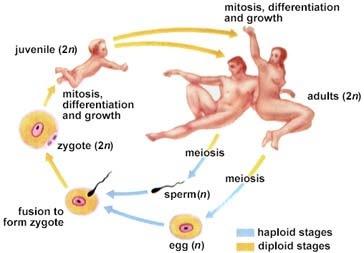Parthenogenesis /ˌpɑrθənoʊˈdʒɛnəsɨs/ is a form of asexual reproduction in which growth and development of embryos occur without fertilization. In animals, parthenogenesis means development of an embryo from an unfertilized egg cell and is a component process of apomixis.

Gynogenesis and pseudogamy are closely related phenomena in which a sperm or pollen triggers the development of the egg cell into an embryo but makes no genetic contribution to the embryo. The rest of the cytology and genetics of these phenomena are mostly identical to that of parthenogenesis.
The word parthenogenesis comes from the Greek παρθένος, parthenos, meaning "virgin" and γένεσις, genesis, meaning "birth". The term is sometimes used inaccurately to describe reproduction modes in hermaphroditic species that can reproduce by themselves because they contain reproductive organs of both sexes in a single individual's body.
Parthenogenesis occurs naturally in many plants, some invertebrate animal species (including nematodes, water fleas, some scorpions, aphids, some bees, some Phasmida and parasitic wasps) and a few vertebrates (such as some fish, amphibians, reptiles and very rarely birds). This type of reproduction has been induced artificially in a few species including fish and amphibians.

Normal egg cells form after meiosis and are haploid, with half as many chromosomes as their mother's body cells. Haploid individuals, however, are usually non-viable, and parthenogenetic offspring usually have the diploid chromosome number. Depending on the mechanism involved in restoring the diploid number of chromosomes, parthenogenetic offspring may have anywhere between all and half of the mother's alleles. The offspring having all of the mother's genetic material are called full clones and those having only half are called "half clones". Full clones are usually formed without meiosis. If meiosis occurs, the offspring will get only a fraction of the mother's alleles.
arthenogenesis is a form of agamogenesis in which an unfertilized egg develops into a new individual. Parthenogenesis occurs naturally in many plants, invertebrates (e.g. water fleas, rotifers, aphids, stick insects, some ants, bees and parasitic wasps), and vertebrates (e.g. some reptiles, amphibians,rarely birds). In plants, apomixis may or may not involve parthenogenesis.







































